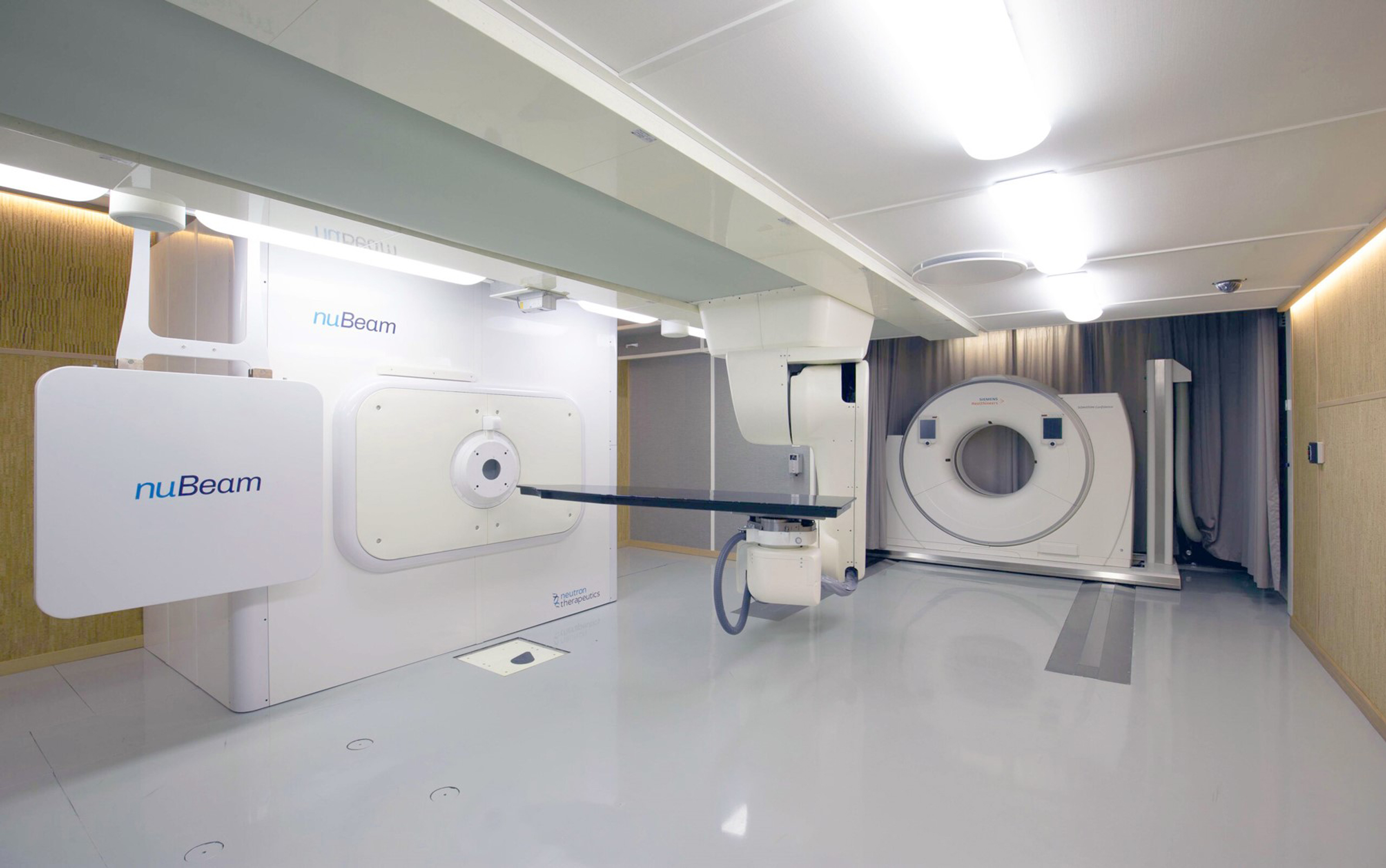


BNCT has the potential to greatly improve therapeutic outcomes by treating the primary tumor site as well as undetected metastases in local region of the tumor. Even tumors that are not candidates for surgery because of their location near sensitive biological structures can potentially be treated with BNCT. BNCT can make the process of radiation treatment much less onerous for the patient. This is because the biologically targeted radiation is delivered primarily to the cancer cells, rather than the healthy tissue. The potential therefore exists to reduce side effects and improve patient quality of life compared to conventional radiotherapy. Studies show that BNCT treatments can be carried out in one or two fractions,** as opposed to the 30 fractions that are typical of conventional x-ray and proton therapies. This can potentially make treatments easier and less costly for patients and healthcare providers alike.
Neutron Therapeutics has developed an accelerator-based, in-hospital neutron source to replace the previously required nuclear reactor. This source is composed of a 2.6 MeV electrostatic proton accelerator and a rotating, solid lithium target for generating neutrons. Neutron Therapeutics will provide this neutron source as part of a comprehensive therapeutic treatment suite, that will combine all of the necessary components for BNCT treatment into a user-friendly package.


2.6 MeV Electrostatic Proton Accelerator
Reliable operation at 30 mA for high patient throughput
Cost-effective in-hospital design
Rotating Solid Lithium Target
Excellent neutron beam quality
Solid target is safe and reliable
Excellent lifetime and automated service minimize cost of ownership

(The nuBeam® suite is an investigational product and has not been approved by the FDA or PMDA.)
visit website : Click Here